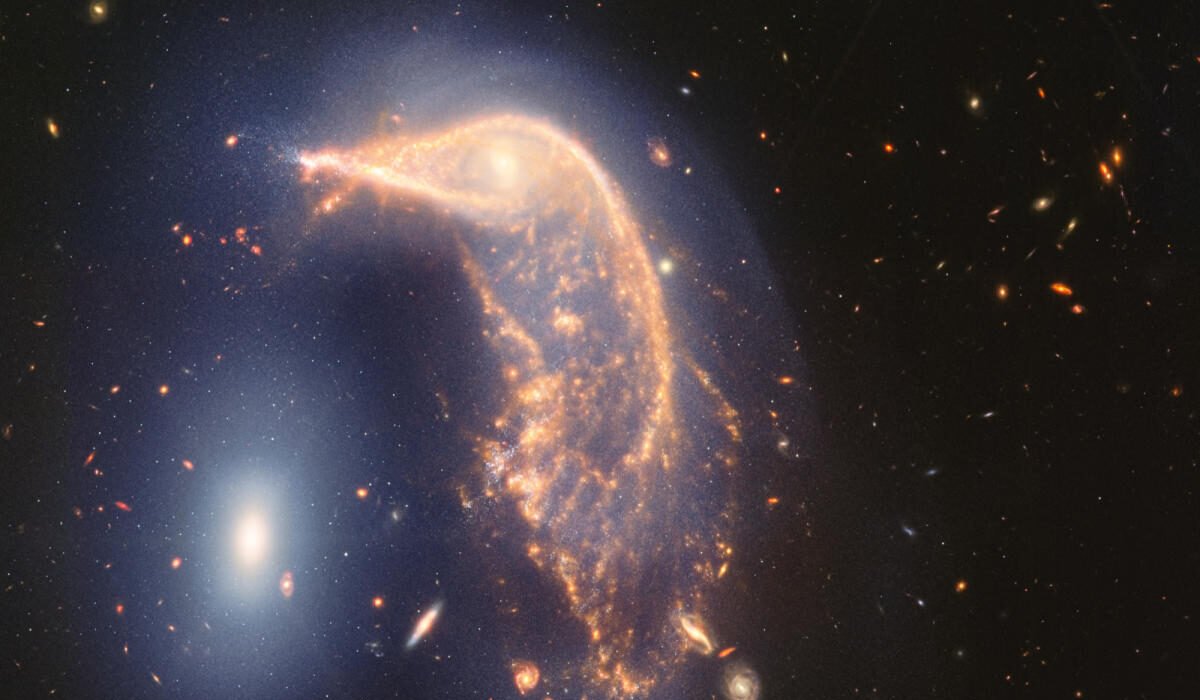NASA and its partners, the European and Canadian space agencies, are celebrating the second year since the James Webb Telescope started sending back photos of the universe by releasing an image of the Penguin and the Egg galaxies. These are interacting galaxies collectively known as Arp 142 located 326 million light-years from Earth, captured by the James Webb in interactive light.
The galaxies first interacted between 25 and 75 million years ago, causing new star formation. Based on previous research, 100 to 200 stars have formed per year in the Penguin — yes, that is the galaxy at the center of the image that looks like a bird’s head — whereas the Milky Way only produces between six and seven new stars per year. In this image taken by the James Webb, the interaction between the two galaxies is marked by a faintly glowing upside-down U. Take note that while the Penguin appears bigger than the Egg galaxy at its left, they have approximately the same mass. If either galaxy were smaller, they would’ve already merged.
In addition to the galaxies prominently featured in the image, you’ll also see more distant galaxies in the background. The space agencies said it’s a “testament to the sensitivity and resolution of Webb’s infrared cameras.” NASA and its partners launched the James Webb Telescope in late 2021 after more than a decade of delays caused by spiraling costs and construction woes. The agencies released the first image it ever captured, the deepest image of the distant universe, in July 2022. Last year, they also commemorated its first anniversary with an image of a nearby stellar nursery.






